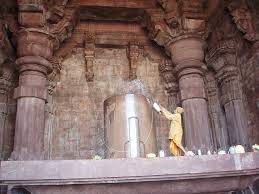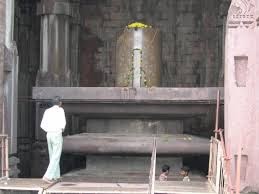1. Lord Shiva the Enigmatic
According to Hindu mythology, Lord Shiva is the Destroyer in the Holy Trinity, the others being Brahma the Creator and Vishnu the Preserver. He has always fascinated his followers by his unique appearance – he has not two but three eyes, has ash smeared all over his body, leads a wild life away from social pretences, and is known for his proverbial anger…but not many know the story about how he was born…
3. The Third Power
Both Brahma and Vishnu set out to locate the start and end of that pillar. Brahma turned into a goose and flew up to find the top of the pillar, while Vishnu turned into a boar and dug into the earth to look for its roots. After their unsuccessful attempt, both came back to find Lord Shiva emerging from an opening in the pillar. Recognising Shiva’s great power, they both accepted that besides them, there was a third power ruling over the universe.
4. Lord Shiva’s Lifestyle
But Lord Shiva is no ordinary god. He is a very complex god, having many roles to play and possessing immense power. His favourite haunt are cemeteriesand his favourite dress code is a headdress of snakes and a necklace of skulls. He is accompanied by a band of terrifying looking demons, who are blood-thirsty as well.
8. Lord Shiva’s Blue Throat
Lord Shiva is also known by the name of “Nilakaṇtha”, which literally means the blue-throated. Once Goddess Parvati learnt that Lord Shiva had swallowed poison, he rushed to hold his neck, so that the poison would not travel neck downwards. That’s how his neck became a deep blue…
9. The Ganga river
One of Shiva's greatest services to the world was to tame the mighty Ganga river. Once upon a time, the Ganga used to traverse through the heavens only, leaving the earth parched and dry. When a wise man changed the course of the river, it threatened to become a raging torrent which would certainly flood the earth. However, Shiva stood in the way of the heavens and the earth and captured Ganga in his thick locks, thereby stemming its flow.
11. The Avatars of Lord Shiva
Lord Shiva, similar to Lord Vishnu, had many avatars. It was Virabhadra, an avatar of Lord Shiva, who disrupted Daksha’s yajna and cut off his head. His Bhairava avatar, also known as Kaal Bhairava, was created to protect the Sati Pind. His Durvasa avatar was famous for his short temper. Khandoba was another avatar of Shiva known in Maharashtrian and Kannada cultures. Finally, Hanuman avatar is known as the eleventh Rudraavtaar of Lord Shiva in the era of Lord Rama!
12. Shiva The Multi-Faceted
Lord Shiva is a god of ambiguity and paradox. He is depicted with an ambivalent nature when worshipped by the Hindus as their supreme God. He is mentioned in the Yajurveda as possessing both malignant and auspicious attributes. He is depicted in the Mahabharata as a figure of honour, delight, and brilliance. The Rudra form of Lord Shiva denotes “the wild one” or the fierce god. Yet, Shiva is also known as Sambhu, or the one who causes happiness




















 var vglnk = { key: '7b97ff3421e492f472158d5e101b45d4' };
(function(d, t) {
var s = d.createElement(t); s.type = 'text/javascript'; s.async = true;
s.src = '//cdn.viglink.com/api/vglnk.js';
var r = d.getElementsByTagName(t)[0]; r.parentNode.insertBefore(s, r);
}(document, 'script'));
/>
var vglnk = { key: '7b97ff3421e492f472158d5e101b45d4' };
(function(d, t) {
var s = d.createElement(t); s.type = 'text/javascript'; s.async = true;
s.src = '//cdn.viglink.com/api/vglnk.js';
var r = d.getElementsByTagName(t)[0]; r.parentNode.insertBefore(s, r);
}(document, 'script'));
/>